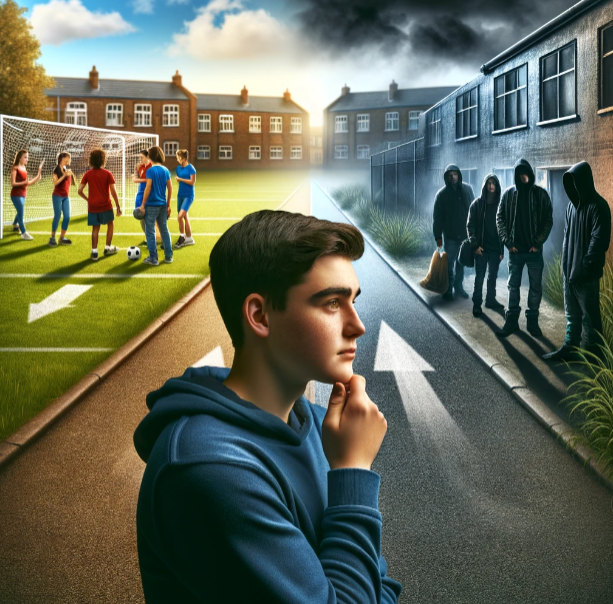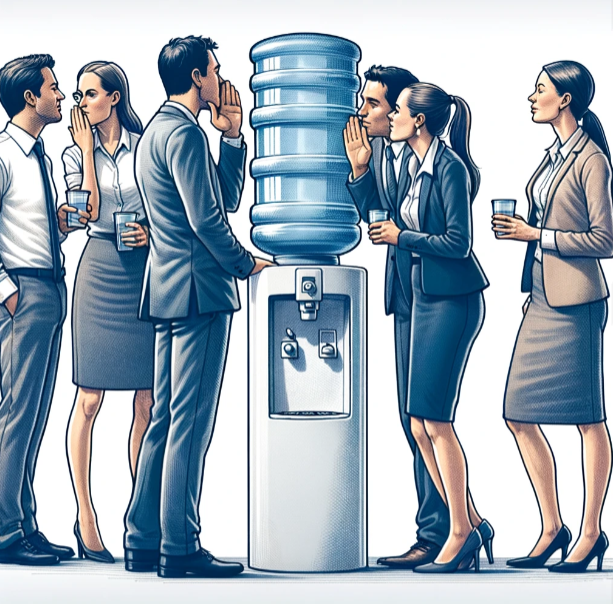Which Meets This Need Better - Joining the Team or Joining the Gang?
In November 1985, I stepped onto a wrestling mat for the first time, weighing in at 96 lbs. Fortunately for me, or perhaps unfortunately, the lowest possible weight class was 99 lbs. At that time, there were only two possible teams – Junior Varsity and Varsity. So…at the age of twelve, I was facing off against similar-sized, not-so-identical-aged counterparts. The most feared image for a kid fresh off playing with GI Joe figures was going toe to toe against wrestlers with stubble on their faces.
That was 38 years ago, yet I vividly recall the first practices where the weeding out occurred. That year, and every year since fifty to seventy kids would be out there on the first day of training. Coach Decker and Coach Mac ran us hard to start. Live wrestling took place as early as the second day of practice, and we’d end each session by working the stairs. Needless to say, by the third week of the season, we’d be down to about 25 guys.
AI may have overdone this one
No sport is easy, and each has its nuances. For instance, swimmers shouldn’t mind being cold, soccer players should enjoy running, and baseball players must be willing to take a fastball off of their thighs once in a while. Wrestling, I learned at my very first practice, and at a very young age…is painful. Getting tossed on the ground repeatedly, twisted arms, jammed and broken fingers, mat burns (brush burns, usually on the face), and the occasional bloody nose – all that shit really, really hurts.
Then there are the whacks to the ego. It takes a lot out of a kid to get pinned (and, in my case, that happened a lot throughout the early years) to get out there and try again. And like all things, with practice, we get better. Then, eventually, I got to be the one doing the pinning. Thirty-eight years later, in my reflective state, I wonder why I put myself through all that. Why did my friends do it? It certainly wasn’t fun at first, and that is why only a handful of wrestlers do it for consecutive years. I remember my older brother going out for the wrestling team a few years before me. He didn’t even stay long enough to get a uniform.
So what did we get out of it aside from one ass-kicking after another? In the landscape of after-school programs, some benefits cater to every child's interests, strengths, and developmental needs. And the answer to this question can actually be applied to children and adults alike. I mean, why do we do anything that we do? Not just joining a wrestling team – but joining a bowling league, a book club, volunteering on a committee, doing stuff with a church group, and for some…even committing crimes.
My good friend Brian Wallace was the Principal at the Devens Therapeutic Day School in Everett, and he is now the Director of Social Emotional Learning for the City of Everett’s Public Schools. Every so often, he and I team up to conduct workshops that are centered on the social-emotional needs of kids. We teach our participants that with kids, all behavior has meaning, and if we pay very close attention to their behavior – we might be better able to understand their needs.
Pretty much every child and adult—yes, you, too—needs to feel a sense of belonging. Feeling a sense of belonging is not the only need, but it certainly is a big one. There are others, like safety, attention, excitement, and love. But let’s just focus on belonging for now. A basic need that is met by participating in sports is the feeling of belonging. Some kids join teams to have this need met. Then, one day – Brian pointed out that the same sense of belonging that is met by some kids by joining sports teams is met by others who actually join gangs.
I don't have enough word space tonight to explain what this means for adults, but it is easy to connect the dots. Maybe you are thinking about the work clique that everyone at your company hates. Or perhaps this highlights a volunteer project that a bunch of people get together to do—that feeling of belonging is pretty powerful. And let us not forget how social media feeds this beast. What have you clicked thumbs up on lately?
No Caption Necessary - Thank you AI
And while sports undeniably promote physical health and teamwork, it's crucial to acknowledge how non-sport after-school activities—ranging from arts and music to STEM clubs and language learning—provide indispensable opportunities for kids to feel like they belong. Non-sports after-school activities offer a sanctuary for children whose passions and talents lie outside the athletic domain. These programs empower children to explore and excel in areas that resonate more deeply with their interests – not alone in their rooms, but with others. Whether it's the creative expression found in painting, the problem-solving skills homed in a robotics club, or the global awareness cultivated through a cultural studies group, these activities validate the diverse ways children can excel and contribute to their communities – all while connecting with a friend who makes them feel connected.
So, the less discussed yet profoundly impactful aspect of non-sport activities is their capacity to foster an environment of inclusivity. Unlike sports, which can sometimes create barriers to participation due to physical prowess, competitive selection, or the fear of not being 'good enough,' activities like drama, chess, or yoga clubs often embrace a more inclusive spirit. Regardless of their physical abilities or socio-economic background, every child can find a niche where they feel valued and included. This sense of belonging is crucial for building self-esteem and a positive self-identity during the formative years of childhood and adolescence.
Including a wide array of non-sports after-school activities is not just an educational strategy; it's a profound investment in the future of all children. By recognizing and nurturing each child's diverse talents and interests, we can cultivate an environment where every student can shine. More importantly, we can do this painlessly—without the brush burns, bloody noses, and broken or jammed fingers.



